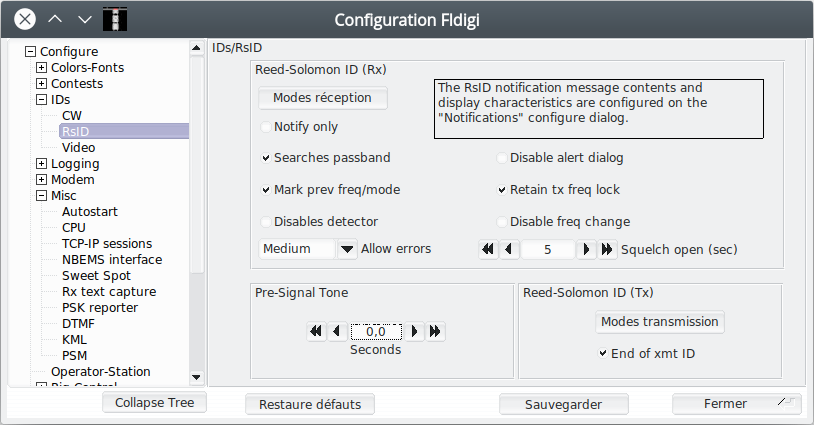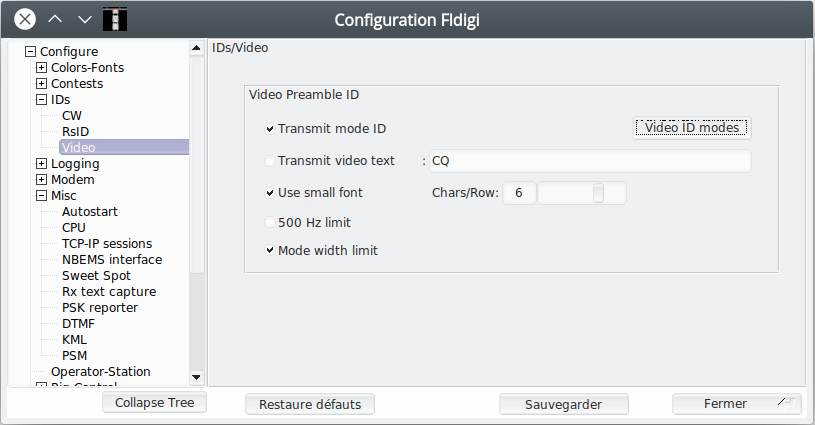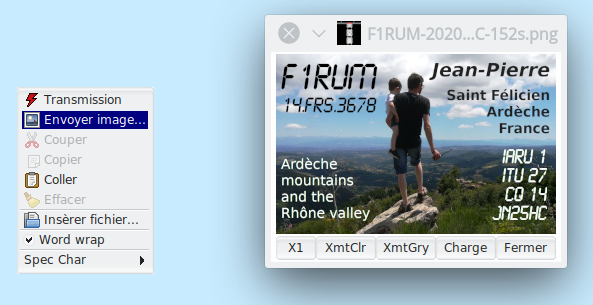Images with MFSK-16 mode
#Fldigi #Digimode #MfskAmong the many digital modes, aka digimodes, there is one that I find really nice. If you saw the title of this post you will have understood which one I’m going to talk about.
MFSK, acronym of “multi-frequency shift keyed”, is a family of digital modes that dates back to the 1960’s but is still interesting because it transmits data with an error correction code (FEC) and it also allows sending images!
Encouraging correspondents
As this mode is not the most frequently used, it is preferable to announce on the digimode frequency ranges that it is going to be used. For this, there are several solutions:
- Ask a contact who has just been working in the good old BPSK-31 if he agrees to switch to MFSK-16 and switch to this mode if OK. Beware, this mode requires a little more than 300 Hz, so make sure you have 10 times more space than for BPSK-31.
- Run a CQ with prefixed indicators to easily identify your mode.
For this second option, there are two ways to do it and I advise you to use both. First of all, a trick that allows you to modulate a video text in the waterfall for people listening to your frequency. It’s easy to see that the person is trying an “exotic” mode and which one.
The second identifier is the modulation of a Reed Solomon Id (RSID) before sending the data modulation. This ID is recognized by most of the digimode software, including fldigi. When it is received, the user is prompted to switch to this mode.
In the waterfall below, the MK16 video text trick is clearly visible. It is sufficient to identify the MFSK-16 mode. It is followed by the Reed Solomon Id modulation just before the MFSK data.

To activate these tricks, go to parameter Ids in fldigi.


Then, the QSO happens in a classical way and is much more reliable than in BPSK-31 (error correction and bandwidth usage).
Images sending
As stated in introduction, this mode allows the sending of images. It is necessary to remain reasonable not to have a too long transmission period by limiting the dimensions of the image.
For example, a 280x180 pixels image will take 152 seconds to send in colour and 51 seconds in greyscale. No need to convert the image to black and white, fldigi can do it at the time of sending depending on the chosen button: XmtClr for color and XmtGry for grayscale.
The calculation of the transfer time is as follows:
- Width x Height / 1000 in greyscale
- Width x Height x 3 / 1000 in color
There is a button X1 / X2 / X4 which allows a transfer in 2 or 4 times faster mode but this is not recognized by all digimode software. So keep X1.
The sending is done from a right click in the input field of the text to be transmitted:

Let’s get this mode going again!
Here we are, this mode which has a lot of quality is not much used anymore and it’s a shame. There are still a lot of PSK-31 users, we just have to convert them by inviting them to try this MFSK-16 mode.
Usual frequencies : 7.071-7.073 MHz and 14.071-14.073 MHz
For more details on this mode : fldigi manual